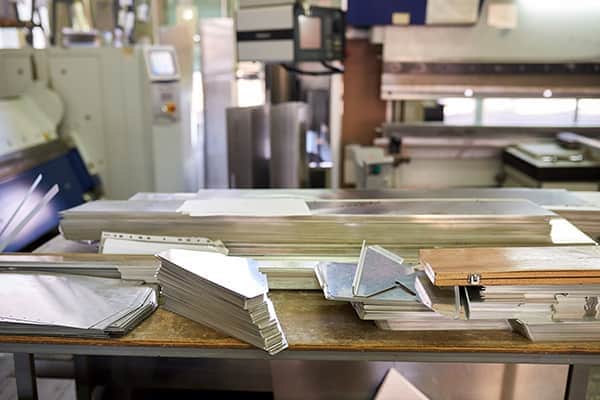Intro
Whenever an engineer puts together a technical drawing package for an outside machine shop, there’s a risk of overengineering. Something that looks perfectly reasonable on the drafting table can destroy your budget when it comes to CNC machining a part.
Not sure where to start? Below are five ways that you might be overengineering your precision CNC machined parts. Take a look and consider where you can trim the fat.
5 Ways You Might Be Overengineering Your Precision CNC Machined Parts
Although there are many ways to avoid overengineering, these five are among the most common examples we run into daily.
Picking Tolerances That are Too Tight
A tolerance of a few mils is always a good thing for an assembly. It ensures parts go together snugly and the parts are perfected for your operation.
The only problem is the price associated with tight tolerances. Taking a tolerance from 0.002” to 1/8” could make your part less expensive by orders of magnitude.
Your designer should be realistic with the accuracy required. If you can get away with opening the tolerances, your budget will thank you.
Going Overboard with the Anodizing
As you probably know, there are different types of anodizing. A hard-anodized finish is excellent for the longevity of a part in tough conditions, but it also makes the machining process much more difficult.
Our shop might have to redesign a piece to get the correct final dimensions after a thick layer of hard anodization is applied. If your part can work with a simple anodization coating, then that’s probably the best idea.
Starting with the Wrong Material
If you don’t select the suitable material for your CNC machined part, then you could be starting at a disadvantage.
Material selection might not seem like a massive deal to a designer, but it equates to a lot of extra effort and required money for a machine shop. Try to avoid designs that require material that is:
– Thicker than it needs to be – does that bracket need to be made from 1/4 stock material, or can you use sheet metal?
– A non-nominal overall thickness – requiring the final part to be 0.228 instead of 0.250 requires passes on the mill to achieve the correct thickness.
– Harder to machine – harder metals are more difficult to machine. They sometimes require specialized bits and slower cutting speeds (both of which equate to more money).
– Tougher to source – materials that are tougher to source require the shop to pay extra, which trickles down to you paying extra.
A rare stainless steel alloy will cost a lot more money than a common 6061 aluminum design. There are applications where you need to use a more expensive material, but avoid using it whenever possible.
Adding Features That Aren’t Machinable (Or Are Very Difficult to Machine)
Avoid adding unnecessary features. Weigh the price of all the “nice to have” features, and decide if they’re indispensable.
Steering away from those complex, internal geometries could save you a ton of money on your part.
Forgetting About the Machinist When Designing
The number one rule when it comes to designing is to design for the machinist. Parts should be as simple as possible to fabricate. This doesn’t just help the shop; it helps to keep your costs and turnaround times low.
If a part is well-dimensioned, easy to understand, and requires minimal machining, then your operation will reap the benefits. A few tips:
– Make the 2D drawing easy to read and understand
– Remember your 3-view setup when designing in “paper space”
– Consider how a part will be physically machined before dimensioning
– Don’t overcrowd the drawing
– Limit the number of written notes: the drawing should speak for itself
Keep in mind, this doesn’t mean that you should ignore your operation’s needs. It just means that you have to design your part to meet these needs to be easily machined. A common saying is, “anyone can design, but only the best engineers can design for the machinist.”
Conclusion
Designing a precision CNC machined part is no easy task. It takes a highly skilled engineer or designer to put together low-cost, fast turnaround parts. If you want some expert help in your corner, reach out to our team at Rapid Axis. We have the machines, expertise, and designers to help you optimize your part for the CNC machine.
